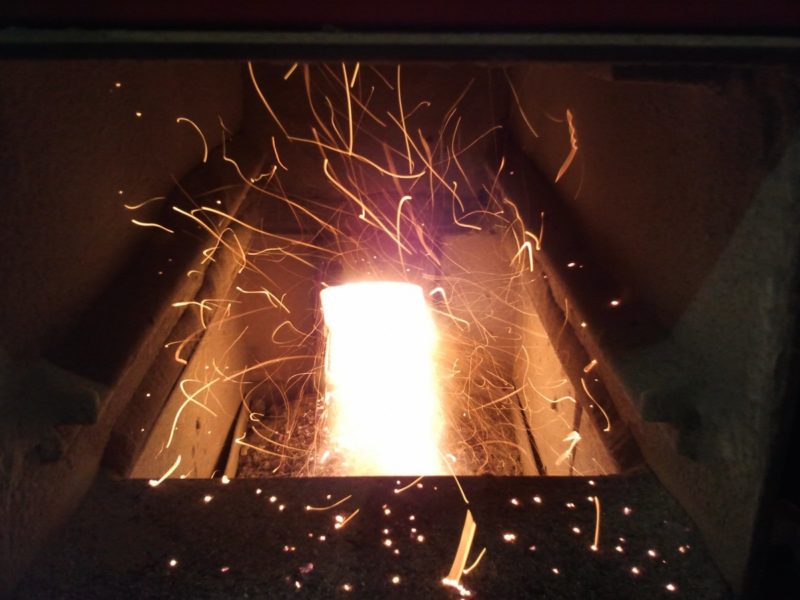Are you not familiar if what is a biomass stove? Well, it is the height of the modern luxury of heating your house and providing hot water. In terms of appearance and feel, a biomass stove is a welcome complement to any room.
Many developing nations will continue burning solid biomass for many years to come for cooking, water heating, and home heating. As a result, solid biomass stoves may be found worldwide in various shapes and sizes.
The term “biomass” has a scientific connotation. To put it another way, biomass is an energy source derived from organic materials. In generating heat, combustion is used in this clean and renewable energy source. Waste wood, forest detritus, crops, and animal feces may all be used to create biomass compounds. In addition, wind and solar energy, which are abundant and regenerative, may fulfill our energy requirements.
Well, there are many more things that you should know about this topic. Just read on to find out!
How Does A Biomass Stove Works?
So, what is a biomass stove? A steady flame is produced and regulated to guarantee optimum efficiency by gently moving fuel from the storage container to the burn tray (called the hopper). Biomass generates heat by burning its stored energy. Like a gas boiler, biomass burners have a programmable thermostat and timer. In addition, a remote control makes it easy to manage daily and weekly activities and changing temperatures at different times of the day.
Even if you’re not at home, you can use your smartphone or tablet to control and adjust the stove. Most of the models come in both air and water versions. Instead of using a fan to circulate air around the stove, it may rely on natural convection to distribute heat evenly throughout the room.
Hydro stoves are more cost-effective and environmentally friendly than boilers for heating a whole house. However, the entire house may be heated using hydro burners, which utilize hot water and radiators already in place.
You may also want to read about how does a pellet stove work and how a wood stove works.
Advantages And Disadvantages Of Using Biomass Stoves
You can obtain heat and hot water from wood stoves or boilers, which use organic materials such as wood logs, pellets, or chips to fuel the combustion process. Single-room heating using a stove is standard. In contrast, a stove can be linked to a boiler or integrated inside it. It will heat the remainder of the home, and hot water will be provided free of charge. This article will examine the pros and cons of putting up a comprehensive heating system.
Pros of using biomass stove
You may reap numerous benefits by using biomass as heating fuel. First, it should help you lower your overall carbon footprint because biomass is a low-carbon fuel. Second, stoves will have to satisfy more outstanding efficiency standards and stricter emission limits by 2022 when a new law takes effect.
You can also reduce your reliance on fossil fuels like electricity and gas by switching to biomass. However, the increased reliance on global supply means that the pricing of these products will be more variable in the future.
Installing a stove reduces your need for central heating since it heats the space more quickly when fitted with a thermostat. As a result, you’ll end up saving money in the long run. Reward yourself for using a heating system by taking advantage of the Renewable Heat Incentive. Wood stoves do not count toward the program’s targets, but both air and ground heat pumps biomass boilers, as well as solar thermal panels, do.
Cons of using biomass stove
In terms of heating, biomass has a slew of downsides. First, because biomass involves the purchase of fuel, it’s more expensive than other forms of renewable energy. Distance from the supplier, time of purchase, and your ability to buy in bulk will all affect your costs, as well as the fuel type you utilize.
The type of fuel you use may also impact your ability to save money; you can learn more about your options by searching online. Because it does not require a lot of space to store the fuel, biomass heating may be used in any building.
According to building codes, the stove’s location, the quantity of chimney work required, and the amount of space required around the stove all affect the installation’s price tag.
It’s A Wrap!
After knowing what is a biomass stove, you know that replacing your gas burners with biomass ones and saving money on heating expenses is possible due to pellets’ 60% efficiency advantage over coal. But for each type of biofuel heating system, there are pros and cons that we will go through in detail.
However, stoves that have been around for a long time but are still widely used have poor combustion. Utilizing old, inefficient stoves comes with some drawbacks. First, it has poor efficiency because you can successfully convert only a tiny percentage of biomass energy into cooking heat.
When anything is burned, a variety of harmful chemicals are discharged into the atmosphere. Updating stove models to be more efficient and less polluting has made cooking with solid biomass energy sources practical. On the other hand, a desirable objective is to make better stoves widely available across the world. You may want to read related articles; know what is the best pellet stove.

